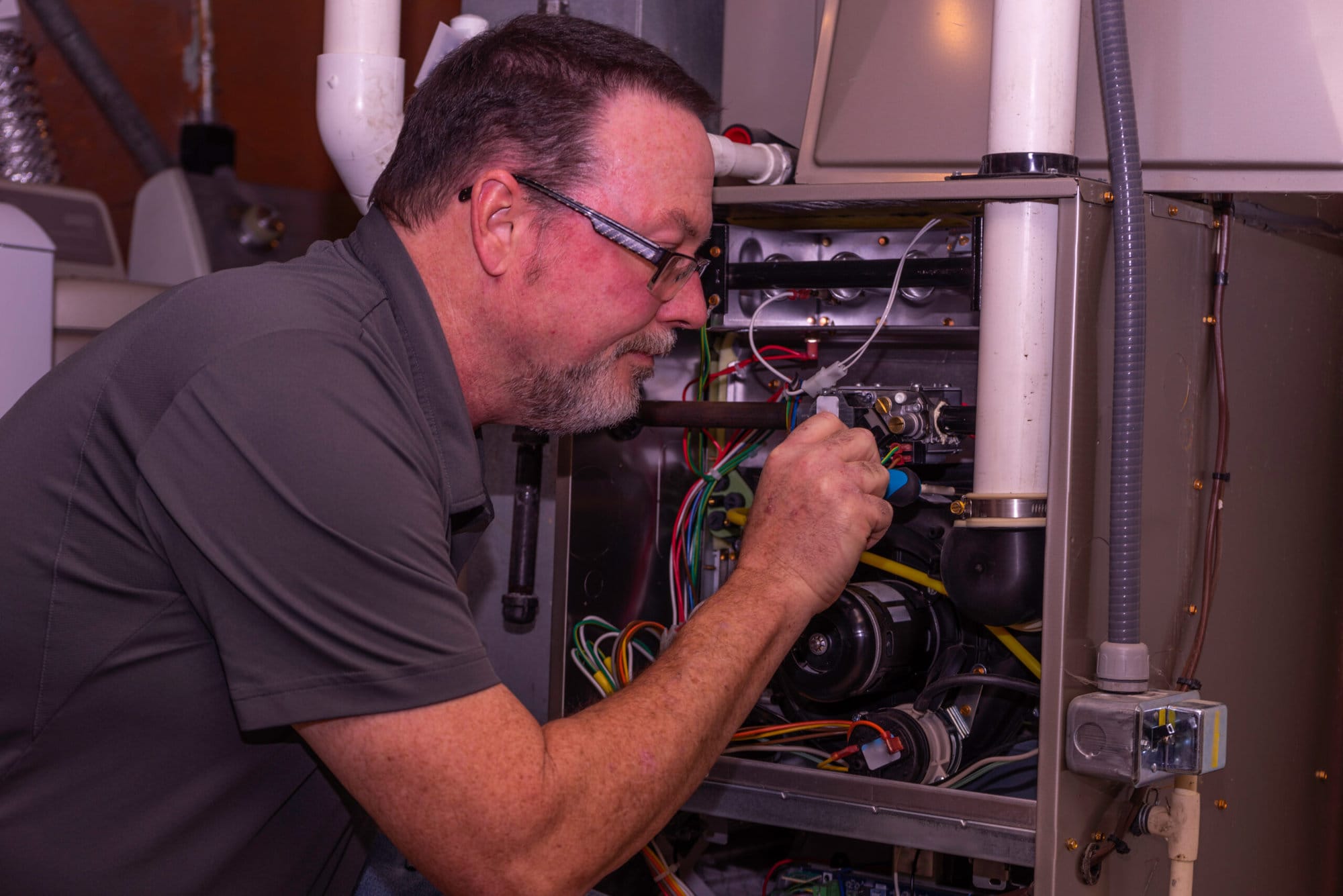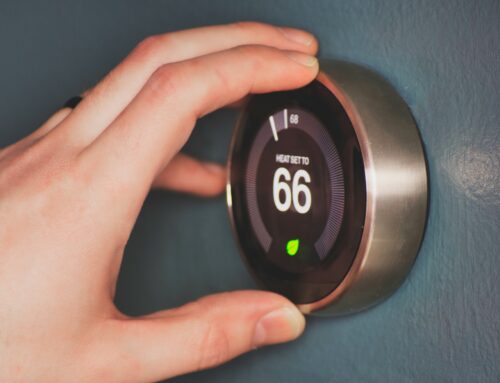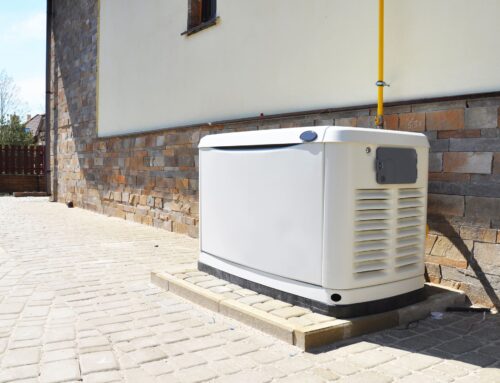Replacing your gas furnace with efficient furnaces or heat pumps is a decision that can significantly impact the comfort and energy efficiency of your home’s HVAC unit. With winter just around the corner, it’s crucial to ensure your central gas furnace, efficient furnaces, and HVAC unit are up to par. But navigating the process of replacing central furnaces or an HVAC system can be overwhelming for homeowners. That’s where this guide comes in. We’ll provide you with valuable insights and expert tips to help you make an informed decision. Additionally, we have step-by-step guides and additional resources that can assist you in understanding complex systems. With our guidance, you can increase your success rate by up to 20 percent. From understanding the benefits of a new heat pump system to finding the right contractor in our central heating dealer network, we’ve got you covered. Get ready to make your home cozy and efficient for the cold months ahead with central furnaces and central gas furnaces. Ensure your home stays comfortable by optimizing your cooling system. Don’t forget to consider the type of fuel you will use for your central furnaces.
Recognizing the Need for Furnace Replacement
Signs of a Failing Furnace
Frequent breakdowns and repairs are clear indicators that your central furnace, fueled by gas, may need to be replaced. If your central gas furnace system is constantly requiring repairs, it may be time to consider a replacement. Central furnaces that rely on fuel can experience frequent issues, necessitating the assistance of a repair technician.
Inadequate Heating and Energy Efficiency
As furnaces age, their ability to provide sufficient heat for your home decreases. This can be due to a decrease in the efficiency of the natural gas system and the clogging of filters. You may notice cold spots or inconsistent heating throughout your space when using central furnaces, like a central gas furnace. This can affect the air quality and comfort in your home by up to 30 percent. Older furnaces often lack energy efficiency, resulting in higher energy bills. By installing a natural gas system and using filters, you can improve energy efficiency by up to 20 percent. If you’re constantly adjusting the thermostat or experiencing rising utility costs, it could be a sign that your natural gas furnace system is no longer operating at its optimal level.
Rising Energy Bills
One of the telltale signs that your natural gas furnace system needs replacing is an increase in energy bills without any obvious explanation. As natural gas furnaces age and become less efficient, they require more energy from the air system to produce the same amount of heat. This inefficiency can lead to higher monthly expenses. If you’ve noticed a significant spike in your natural gas heating costs compared to previous years, it’s worth considering a new furnace system.
Paying attention to signs like frequent breakdowns and inadequate heating in your natural gas system is crucial. Aging natural gas furnaces not only struggle with providing adequate warmth but also tend to consume more energy, resulting in higher utility bills. The system may also affect the air quality in your home. By being aware of these warning signs and taking action promptly, you can ensure a comfortable and cost-effective heating and air conditioning system for your home.
Evaluating Your Current Gas Furnace
Assessing the age and condition of your current gas furnace and air system is essential. By evaluating its system performance, repair history, and maintenance requirements, you can determine if your heating system still meets your needs efficiently.
Age and Condition
Consider the age of your current gas furnace. Typically, air furnaces have a lifespan of around 15-20 years. If your furnace’s air system is approaching or surpassing this timeframe, it may be time to consider a replacement. Assess its overall condition. Are there any visible signs of wear and tear? Is it functioning optimally or experiencing frequent breakdowns?
Performance
Evaluate the performance of your gas furnace. Does it provide consistent heat throughout your home? Are there any noticeable fluctuations in temperature? If you find that certain areas of your air conditioning system are consistently colder than others or that you’re constantly adjusting the thermostat to maintain comfort, it could indicate an issue with your furnace’s performance.
Repair History
Take into account the repair history of your gas furnace system. Has it required frequent repairs in recent years? Have these repairs been minor or major? Consider the cost and frequency of these repairs to your system, as they can add up over time. If you find yourself spending more on repairs than what a new furnace system would cost, it may be more cost-effective to replace it.
Maintenance Requirements
Consider the maintenance requirements of your current gas furnace. Regular maintenance is crucial for optimal performance and longevity. If you’ve neglected regular tune-ups or haven’t kept up with air filter changes and cleaning, it could impact your air system’s efficiency and lifespan.
By evaluating these factors – age, condition, performance, repair history, and maintenance requirements – you can make an informed decision about whether replacing your current gas furnace system is necessary for efficient heating in your home.
Understanding Furnace Types and Efficiency Ratings
To make an informed decision about gas furnace replacement, it’s essential to understand the different types of furnace systems available and their efficiency ratings. This knowledge will help you choose the most suitable replacement system for your home.
Types of Furnaces
There are various types of furnaces to consider when replacing your gas furnace. These include single-stage, two-stage, and modulating furnaces.
-
Single-stage furnaces have only one heat output setting, which means they operate at full capacity whenever they are turned on.
-
Two-stage furnaces offer two heat output settings: high and low. They can adjust their heat output based on the heating needs of your home, resulting in more efficient operation.
-
Modulating furnaces provide a continuous range of heat output levels, allowing for precise control over temperature and energy usage.
Efficiency Ratings
Efficiency ratings are an important factor to consider when choosing a replacement furnace. The Annual Fuel Utilization Efficiency (AFUE) rating is commonly used to measure a furnace’s efficiency.
-
AFUE represents the percentage of fuel that is converted into usable heat. For example, a furnace with an AFUE rating of 95% converts 95% of the fuel it consumes into heat, while 5% is lost through exhaust.
-
Higher AFUE ratings indicate greater efficiency and lower energy costs in the long run.
Understanding these factors will assist you in selecting a gas furnace replacement that meets your heating needs while maximizing energy efficiency. By considering the type of furnace and its efficiency rating, you can ensure optimal comfort in your home while minimizing energy waste.
Remember to consult with a qualified HVAC professional who can assess your specific requirements and recommend the best options for gas furnace replacement based on your budget and preferences.
Key Features in Modern Gas Furnaces
Variable-Speed Blowers: Better Airflow Control and Improved Comfort
Modern gas furnaces come equipped with variable-speed blowers, which offer several advantages. One of the key benefits is better airflow control. Unlike traditional single-speed blowers that operate at a fixed speed, variable-speed blowers can adjust their speed based on the heating needs of your home. This means they can deliver just the right amount of warm air to each room, ensuring consistent comfort throughout your living space. These blowers are quieter than their single-speed counterparts, providing a more peaceful environment.
High Efficiency: Significant Energy Savings
Upgrading to a high-efficiency gas furnace can lead to substantial energy savings compared to older models. High-efficiency furnaces are designed to convert a larger portion of the fuel into usable heat, resulting in lower energy consumption and reduced utility bills. These furnaces typically have an Annual Fuel Utilization Efficiency (AFUE) rating of 90% or higher, meaning that 90% or more of the fuel is converted into heat for your home. By upgrading to a high-efficiency gas furnace, you not only save money but also contribute to environmental sustainability by reducing carbon emissions.
Advanced Features: Personalized Temperature Control with Zoning Systems
Modern gas furnaces often come with advanced features like zoning systems that allow for personalized temperature control in different areas of your home. With zoning systems, you can divide your house into separate zones and set different temperatures for each zone based on individual preferences and usage patterns. This enables you to optimize comfort levels while minimizing energy waste in unused areas.
Determining the Cost of Gas Furnace Installation
To accurately determine the cost of gas furnace installation, there are several factors that need to be taken into consideration. These factors include the size of the furnace, the brand chosen, and any additional features or upgrades desired.
Larger furnaces generally come with a higher price tag due to their increased heating capacity. It’s important to choose a furnace that is appropriately sized for your specific heating needs in order to ensure optimal efficiency and performance.
The brand of the furnace can also impact the installation cost. Some brands are known for their high-quality and reliability, which often comes with a higher price point. However, investing in a reputable brand can provide peace of mind knowing that you have a reliable and long-lasting furnace.
In addition to the upfront costs of purchasing the furnace itself, labor expenses should also be considered when budgeting for installation. Hiring a professional HVAC contractor ensures that the installation is done correctly and safely. The complexity of the installation process and any necessary modifications to existing ductwork or ventilation systems can influence labor costs.
To get an accurate idea of how much gas furnace installation will cost, it’s recommended to obtain multiple quotes from different HVAC contractors. This allows you to compare prices and services offered by different providers. Keep in mind that while cost is important, it’s equally crucial to consider factors such as reputation, experience, and customer reviews when choosing an HVAC contractor.
Determining the cost of gas furnace installation involves considering various factors such as size, brand, additional features, and labor expenses. By obtaining multiple quotes from reputable HVAC contractors and carefully evaluating each option based on both price and quality criteria, homeowners can make informed decisions about their gas furnace replacement project.
Choosing the Right Size and Type for Your Home
Proper sizing is crucial. It ensures optimal performance and efficiency, allowing you to maximize comfort while minimizing energy consumption. To choose the right size, consider factors such as climate, insulation, and square footage.
When determining the size of your new furnace, take into account the climate in which you live. Colder climates require larger units to provide sufficient heat during harsh winters. On the other hand, milder climates may require smaller units for more moderate temperature control.
Insulation also plays a significant role in determining the appropriate size of your gas furnace. Well-insulated homes retain heat better, allowing you to opt for a smaller unit without sacrificing comfort. Conversely, poorly insulated homes may need a larger furnace to compensate for heat loss.
Square footage is another critical factor to consider. Larger homes typically require more powerful furnaces to adequately distribute warm air throughout all rooms. Smaller homes can often get by with smaller units that provide sufficient heating capacity.
In addition to size considerations, it’s essential to determine whether a forced-air system or radiant heating suits your home best. Forced-air systems use ductwork and blowers to distribute heated air throughout the house quickly. Radiant heating relies on panels or tubes installed in floors or walls that emit heat directly into living spaces.
By carefully considering these factors – climate, insulation, square footage, and type of heating system – you can confidently choose the right size and type of gas furnace that will meet your home’s specific needs while ensuring optimal performance and efficiency.
Essential Pre-Installation Considerations
Proper Ventilation for Safe Operation
Ensuring proper ventilation is crucial for the safe operation of your new gas furnace. A gas furnace produces combustion gases that need to be safely expelled from your home. This requires a well-functioning ventilation system, such as a flue or chimney, to remove harmful gases like carbon monoxide. Before installing your new furnace, it’s essential to assess the condition and adequacy of your existing ventilation system. If any issues are identified, it’s important to address them promptly to prevent potential safety hazards.
Modifications or Upgrades
Before proceeding with the installation, it’s vital to check if any modifications or upgrades are needed in your home. Gas furnaces require specific requirements for installation, including proper ductwork and electrical connections. Assess whether your current infrastructure meets these requirements or if any adjustments are necessary. For example, you may need to install additional ducts or upgrade your electrical system to accommodate the new furnace’s power demands. Taking care of these modifications beforehand will ensure a smooth and efficient installation process.
Permits and Building Codes
Obtaining the necessary permits and complying with local building codes is an essential step when replacing a gas furnace. Local authorities have regulations in place to ensure safety standards are met during installations. Contact your local building department or consult with a licensed professional to understand the permit requirements and building codes applicable in your area. By adhering to these regulations, you can avoid potential fines and ensure that the installation is done correctly.
Selecting Reliable HVAC Contractors
To ensure a smooth and successful gas furnace replacement, it is crucial to select reliable HVAC contractors. Here are some key points to consider when choosing the right professionals for the job:
Research and choose licensed, insured, and experienced HVAC contractors.
You want to work with contractors who have the necessary licenses and insurance. This ensures that they meet industry standards and regulations while providing you with peace of mind. Experience plays a vital role in their ability to handle complex installations efficiently.
Read customer reviews and ask for references to assess their reputation.
Before making a decision, take the time to read customer reviews about different HVAC contractors. This will give you insights into their past performance and customer satisfaction levels. You can also ask for references from the contractor directly, allowing you to speak with previous clients about their experiences.
Request written estimates and compare services offered before making a decision.
Obtaining written estimates from multiple HVAC contractors is essential in order to compare prices and services offered. This will help you make an informed decision based on your budget and specific needs. Remember to consider factors such as warranty coverage, energy efficiency ratings, and any additional services included in the package.
By following these steps, you can ensure that you choose reliable HVAC contractors who will provide quality service during your gas furnace replacement project. Taking the time to research, read reviews, ask for references, and compare estimates will help you make an informed decision that meets your requirements.
Minimizing Costs and Maximizing Efficiency
Explore available rebates, tax credits, or financing options for cost savings.
It’s essential to consider ways to minimize costs. One effective approach is to explore available rebates, tax credits, or financing options that can help you save money. Many utility companies and government agencies offer incentives for upgrading to energy-efficient systems. These incentives can significantly reduce the upfront costs of purchasing and installing a new gas furnace.
Regular maintenance can extend the lifespan of your new gas furnace.
To maximize the lifespan of your newly installed gas furnace and avoid costly repairs down the line, regular maintenance is key. It’s recommended to schedule annual maintenance checks with a qualified HVAC technician. During these visits, they will inspect and clean your furnace, ensuring it operates at peak efficiency. Regular maintenance not only helps prevent breakdowns but also improves energy efficiency, saving you money on utility bills in the long run.
Use programmable thermostats to optimize energy usage and reduce expenses.
Optimizing energy usage is another crucial aspect of minimizing costs when replacing your gas furnace. By installing programmable thermostats in your home, you can set specific temperature schedules based on your daily routines. For example, you can program the thermostat to lower the temperature when you’re away from home or asleep and raise it when you return or wake up. This way, you won’t waste energy heating an empty house or maintaining high temperatures unnecessarily.
Programmable thermostats offer convenience while helping reduce energy consumption and lower heating expenses. They allow you to have better control over your indoor climate while optimizing efficiency by avoiding unnecessary heating cycles.
Contact An HVAC Contractor
We hope this comprehensive resource has provided you with valuable insights and guidance as you navigate the process of replacing your gas furnace. By recognizing the need for a replacement, evaluating your current furnace, understanding different types and efficiency ratings, considering key features, determining installation costs, choosing the right size and type, addressing pre-installation considerations, selecting reliable contractors, and maximizing efficiency while minimizing costs, you are well-equipped to make an informed decision that will benefit your home and your wallet.
Now it’s time to take action! Reach out to reputable HVAC contractors in your area and start exploring your options. Remember to consider not only the upfront costs but also long-term savings and energy efficiency. By upgrading to a modern gas furnace that meets your specific needs, you can enjoy improved comfort and lower energy bills. Don’t hesitate to ask questions, compare quotes, and seek professional advice. With the knowledge gained from this guide, you are empowered to make a smart investment that will keep your home warm and cozy for years to come.
Contact Us For Sonoma Count HVAC Services
Frequently Asked Questions
What factors should I consider when replacing my gas furnace?
When replacing your gas furnace, you should consider factors such as the size of your home, energy efficiency ratings, cost of installation and operation, available rebates or incentives, and the reputation of the manufacturer and installer. These factors will help you make an informed decision that suits your needs and budget.
How often should I replace my gas furnace?
On average, a gas furnace has a lifespan of about 15-20 years. However, this can vary depending on various factors such as maintenance, usage patterns, and the quality of the unit. If your furnace is older than 15 years or experiencing frequent breakdowns, it may be time to consider a replacement.
Can I install a new gas furnace myself?
Gas furnace installation requires specialized knowledge and skills to ensure safety and proper functioning. It is highly recommended to hire a professional HVAC technician for installation. They have the expertise to handle gas lines, electrical connections, ductwork modifications, and ensure compliance with local codes and regulations.
Are there any energy-efficient options for gas furnaces?
Yes! Energy-efficient options like condensing furnaces have higher Annual Fuel Utilization Efficiency (AFUE) ratings compared to conventional models. These furnaces extract more heat from combustion gases before they are vented out, resulting in increased efficiency and lower energy bills. Look for furnaces with ENERGY STAR certification for added assurance of energy efficiency.
How long does it take to replace a gas furnace?
The duration of a gas furnace replacement can vary depending on various factors such as the complexity of the installation, accessibility of the existing system, and any additional modifications required.





